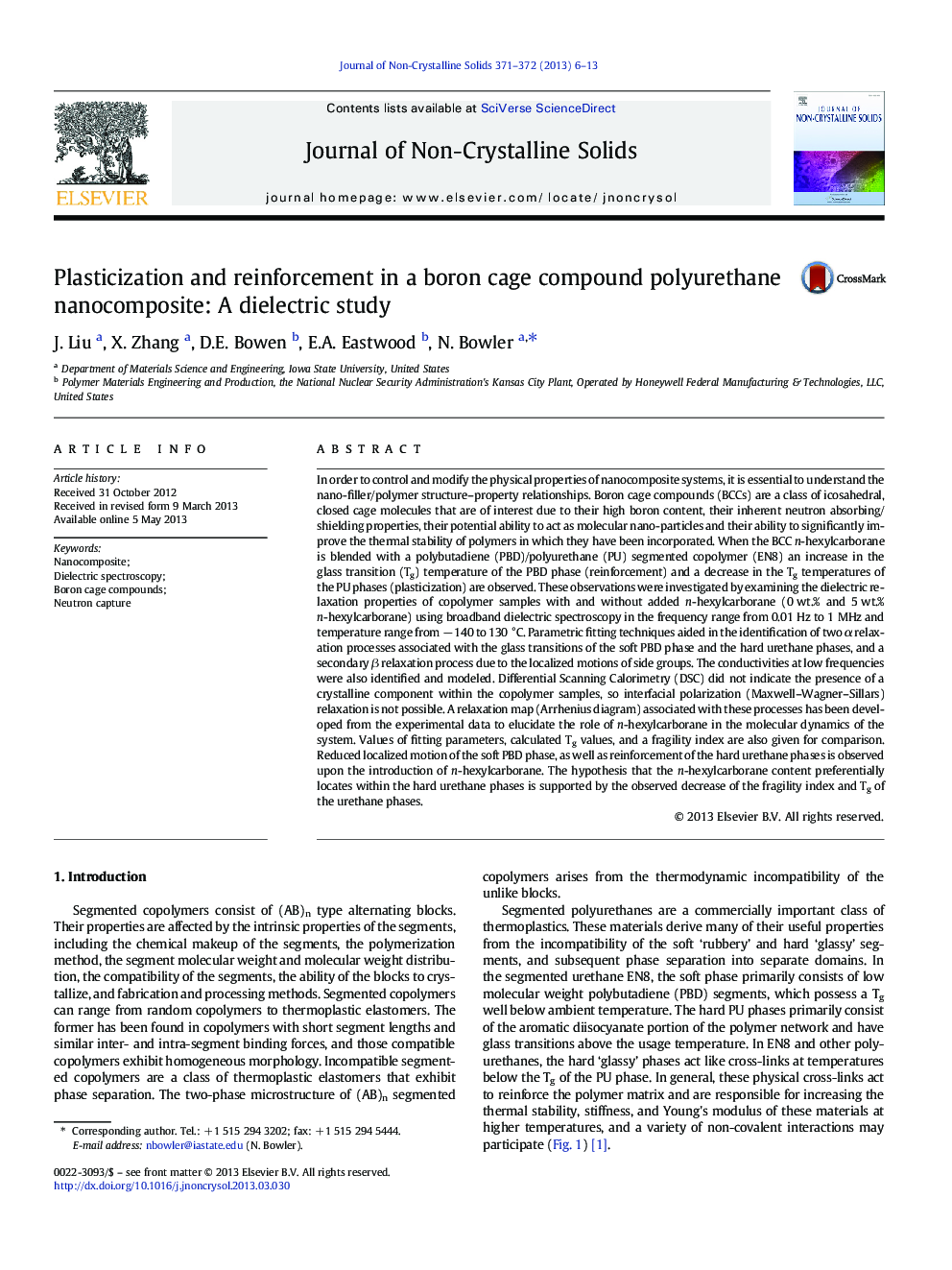| کد مقاله | کد نشریه | سال انتشار | مقاله انگلیسی | نسخه تمام متن |
|---|---|---|---|---|
| 1481296 | 1510465 | 2013 | 8 صفحه PDF | دانلود رایگان |

• The boron cage compound n-hexylcarborane is used as a molecular nano-filler.
• When blended with a polybutadiene/polyurethane copolymer Tg of PBD increases.
• When blended with a polybutadiene/polyurethane copolymer Tg of PU decreases.
• α-type and β-type relaxation processes are identified by dielectric spectroscopy.
• An Arrhenius diagram elucidates the molecular dynamics of the system.
In order to control and modify the physical properties of nanocomposite systems, it is essential to understand the nano-filler/polymer structure–property relationships. Boron cage compounds (BCCs) are a class of icosahedral, closed cage molecules that are of interest due to their high boron content, their inherent neutron absorbing/shielding properties, their potential ability to act as molecular nano-particles and their ability to significantly improve the thermal stability of polymers in which they have been incorporated. When the BCC n-hexylcarborane is blended with a polybutadiene (PBD)/polyurethane (PU) segmented copolymer (EN8) an increase in the glass transition (Tg) temperature of the PBD phase (reinforcement) and a decrease in the Tg temperatures of the PU phases (plasticization) are observed. These observations were investigated by examining the dielectric relaxation properties of copolymer samples with and without added n-hexylcarborane (0 wt.% and 5 wt.% n-hexylcarborane) using broadband dielectric spectroscopy in the frequency range from 0.01 Hz to 1 MHz and temperature range from − 140 to 130 °C. Parametric fitting techniques aided in the identification of two α relaxation processes associated with the glass transitions of the soft PBD phase and the hard urethane phases, and a secondary β relaxation process due to the localized motions of side groups. The conductivities at low frequencies were also identified and modeled. Differential Scanning Calorimetry (DSC) did not indicate the presence of a crystalline component within the copolymer samples, so interfacial polarization (Maxwell–Wagner–Sillars) relaxation is not possible. A relaxation map (Arrhenius diagram) associated with these processes has been developed from the experimental data to elucidate the role of n-hexylcarborane in the molecular dynamics of the system. Values of fitting parameters, calculated Tg values, and a fragility index are also given for comparison. Reduced localized motion of the soft PBD phase, as well as reinforcement of the hard urethane phases is observed upon the introduction of n-hexylcarborane. The hypothesis that the n-hexylcarborane content preferentially locates within the hard urethane phases is supported by the observed decrease of the fragility index and Tg of the urethane phases.
Journal: Journal of Non-Crystalline Solids - Volumes 371–372, 1 July 2013, Pages 6–13